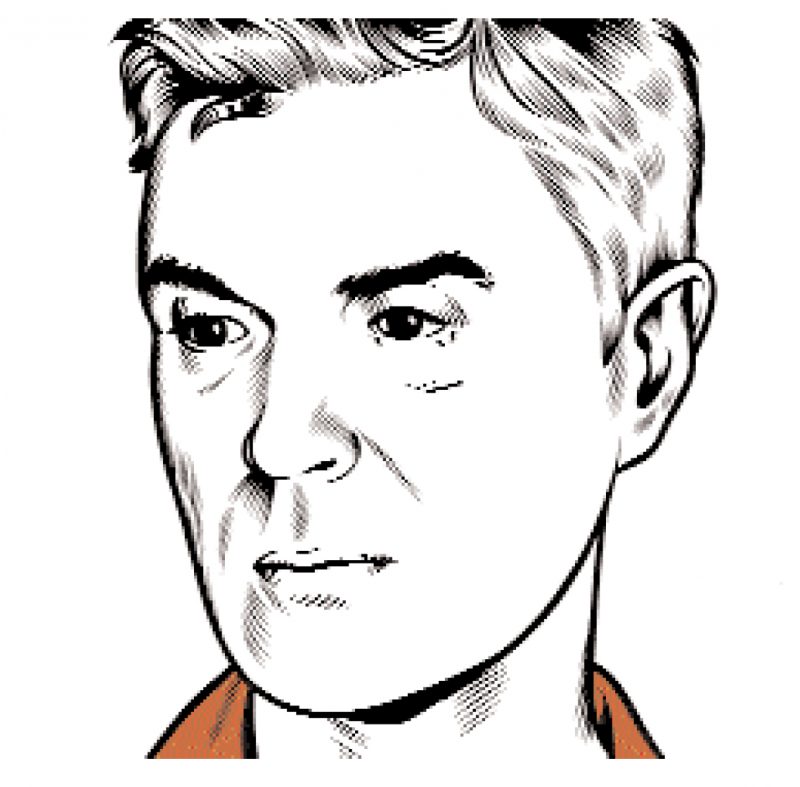There doesn’t seem to be much need for a standard introduction here. This is David Byrne. And he has a very excellent new album, Grown Backwards, easily his most stylistically varied, probably his most delicately beautiful.
—Dave Eggers
THE BELIEVER: You’re on a tour right now for Grown Backwards. Where were you tonight? Here is my guess: Mumbai, née Bombay.
DAVID BYRNE: Tonight we were in a lovely little opera house here in Newcastle, England. A drunk woman got the show off to good start by singing from her seat. I halted the show but she continued. The audience was laughing. I didn’t want to turn it into a thing at her expense, so we began. Later, she was doing some wobbly dancing in front of the stage with her jean jacket on backwards, buttoned up to the top. She must have had help with that.
BLVR: There’s something about your live shows. People really dance—which isn’t what everyone would expect. They’re joyous events, and you do a fair amount of dancing yourself, which drives the audience sort of wild. They love it when you dance.
DB: In hindsight I realize that at first I used to get onstage out of some desperate need—I was so painfully shy that strangely it was the only way I could express myself. So it was cathartic and powerful, but hardly what you would call pleasure. When Talking Heads became a big funk ensemble, I sensed there was something more. I began to dance, to enjoy myself, to sense the connection between secular music and the gospel church, with the ecstatic religions like Candomblé and Santeria. Now it’s completely pleasurable—just the physical and emotional pleasure of singing is completely transporting. The act of singing recreates the emotions that went into the songs in the first place—like adding water to freeze-dried food, the emotions get reconstituted and the singing is the water you add. And I still dance, sort of.
BLVR: You take a lot of photographs on the road, and your ears are obviously open to new sounds from around the world. Do you still get a lot, artistically speaking, from seeing these places, from traveling, or is a grind after a while?
DB: I love the chance to explore these towns. Today we were in Newcastle and I rode my folding mountain bike over to the BALTIC, their new contemporary art center. I swerved around puddles of vomit and broken bottles and immediately saw the beginnings of a kind of vision, a landscape of desolation mingled intimately with big new blobby glass buildings and sparkly new hotels and conference centers. The whole perverse Marxian view was so damn obvious—and...
You have reached your article limit
Sign up for a digital subscription and continue reading all new issues, plus our entire archives, for just $1.50/month.
Already a subscriber? Sign in





